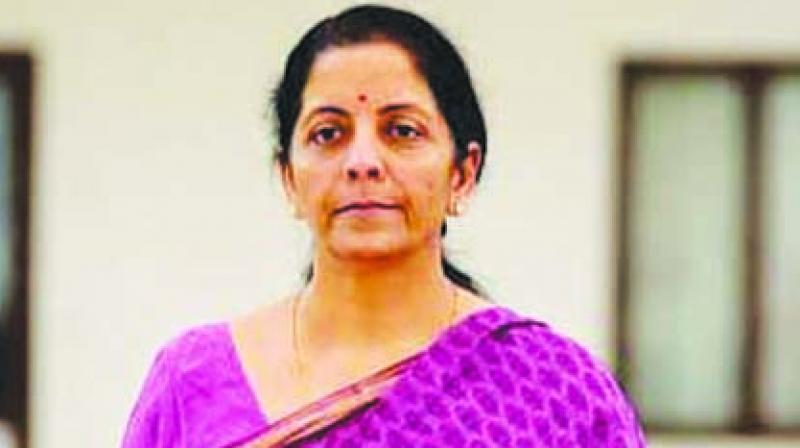Does GDP really double on its own in 5 years?
During the UPA-2 tenure (2009-13), GDP in India grew at a compound annual real growth rate of 7.45 per cent.

In the Budget presented by finance minister Nirmala Sitharaman in July 2019, it was mentioned that the government would work to increase the Gross Domestic Product (GDP) from about Rs 190 lakh crores in FY 2018-19 to about Rs 354 lakh crores (equivalent of $5 trillion at an exchange rate of Rs 70.7 to the dollar) by 2023-24. Both are in current prices. This is the Modi 2.0 government targeting to increase the GDP by 86 per cent in five years.
During the Budget discussion many times later, former finance minister P. Chidambaram brushed aside the target of the government and ridiculed that it does not require either a Prime Minister or a finance minister to achieve this as the GDP would double automatically in five years. The GDP of India increased from Rs 48 lakh crores to Rs 107 lakh crores during the UPA-2 tenure, which means the GDP increased by 122 per cent between FY 2008-09 and FY 2013-14. Based on this, we all would conclude that under the guidance of Harvard-educated Mr Chidambaram, UPA-2 achieved more than a doubling of the GDP in five years and hence he deserves to claim that the GDP would double automatically, as he did. Moreover, there is no greatness in the Modi 2.0 government’s claim that it would take India’s GDP to $5 trillion in FY 2023-24. However, if we dig deeper, we understand how Mr Chidambaram has hidden the truth on how UPA-2 achieved 122 per cent growth in GDP in five years.
First, let us see how GDP is calculated. Let us assume that in year X, the GDP is 100 units and in year X+1, the real growth is 7 per cent and inflation is 6 per cent. As a result, the GDP in year X+1 will be 113 units. That is, GDP grows as per nominal growth which is the sum of real growth and inflation. The increase of GDP is very similar to the increase in the weight of the body. Bone and muscle growth in the body contributes to the fitness of the body and real growth in GDP is akin to this. Flab and fat growth in the body lead to unfitness of the body and inflation in GDP is akin to this. However, the body needs some fat and at the same line moderate inflation is inevitable in a growing economy.
During the UPA-2 tenure (2009-13), GDP in India grew at a compound annual real growth rate of 7.45 per cent. The compound annual inflation was 9.88 per cent. The contribution of real growth in the increase in GDP was just 43 per cent, whereas the contribution of inflation in the increase in GDP was just 57 per cent. Inflation contributed much more than the real growth in the growth of GDP when the Sonia-Manmohan Singh-Chidambaram trio was ruling the country in UPA-2. Let us compare this with the Modi 1.0 tenure (2014-19). Between FY 2013-14 and FY 2018-19, GDP in India increased from Rs 107 lakh crores to Rs 190 lakh crores, which means GDP increased by 77 per cent in Modi.1’s tenure. During Modi 1.0’s tenure, GDP in India grew at a compound annual real growth rate of 7.58 per cent. The compound annual inflation was 3.74 per cent. The contribution of real growth in the increase in GDP was just 67 per cent, whereas the contribution of inflation in the increase in GDP was just 33 per cent. The real growth contribut
ed to a two-thirds increase in GDP, whereas inflation contributed to only one-third during this period. This is in stark contrast to the GDP growth story of UPA-2.
In a nutshell, the issue is not about doubling the GDP in five years. It is about the way the government achieves it. During UPA-2, India achieved 122 per cent growth in GDP with a reduced real growth and skyrocketing inflation. During the Modi 2.0 tenure, the government planned to achieve the same by higher real growth of about 9 per cent and moderate inflation of 4 per cent. For this precise reason, the government signed the Monetary Policy Framework with the Reserve Bank of India in 2016 and it is valid for five years, and may be extended with newer terms and conditions. So, doubling the economy with moderate inflation is not an easy task as claimed by Mr Chidambaram, and it requires a lot of guts for the government to commit itself for such a big challenge in the very first Budget after the election victory.
If this is the fact, it must be surprising to all of us why the former finance minister, Mr Chidambaram, hid the fact about doubling of GDP. As a shrewd man, Mr Chidambaram knows ordinary folk don’t understand the intricacies of what constitutes GDP and how GDP is estimated. That is why he continued his tirade that the doubling of GDP happens on its own and does not require either the PM or FM. The ordinary voter may not be aware of intricacies of real growth, nominal growth, inflation and GDP. But he knows whether price rise pinches his stomach in a tenure and based on which he will vote. There are many reasons for the humiliating defeat of the Congress in the 2014 elections. But the vital reason for the decimation of the Congress in 2014 was skyrocketing inflation during the UPA-2 tenure. The BJP got a bigger mandate in 2019 compared to 2014 essentially due to the moderate inflation the Modi 1.0 government managed to sustain.
It is not known why Mr Chidambaram lied so blatantly, even though his lies on the Indian economy did not win two consecutive elections for the Congress. It is well known that Mr Chidambaram had been close to M. Karunanidhi, the patriarch of the DMK, for about 30 years. It appears that he learnt a lot more from Anna Arivalayam, the headquarters of the DMK, than from the corridors of Harvard University.
The writer is a public policy analyst

